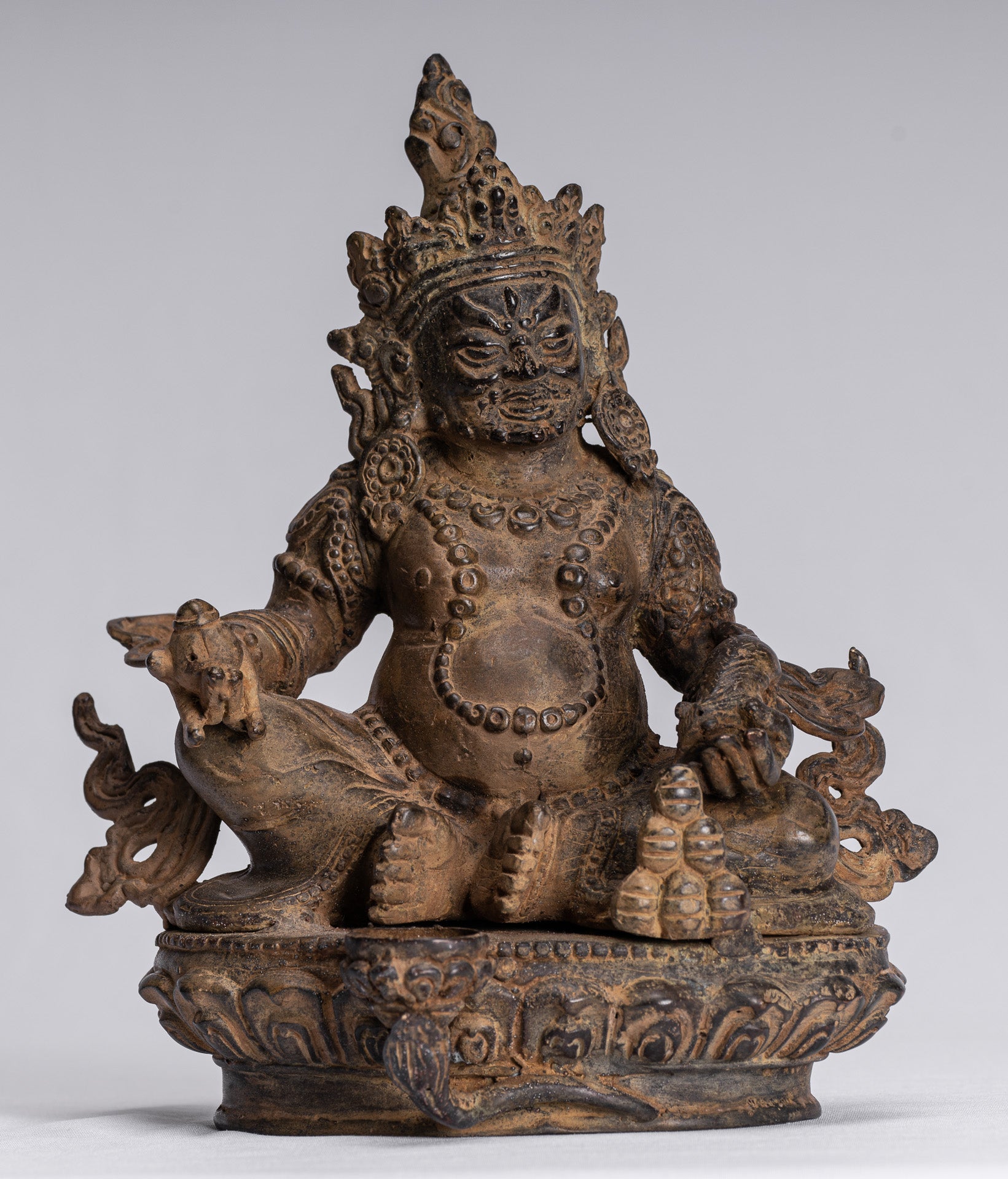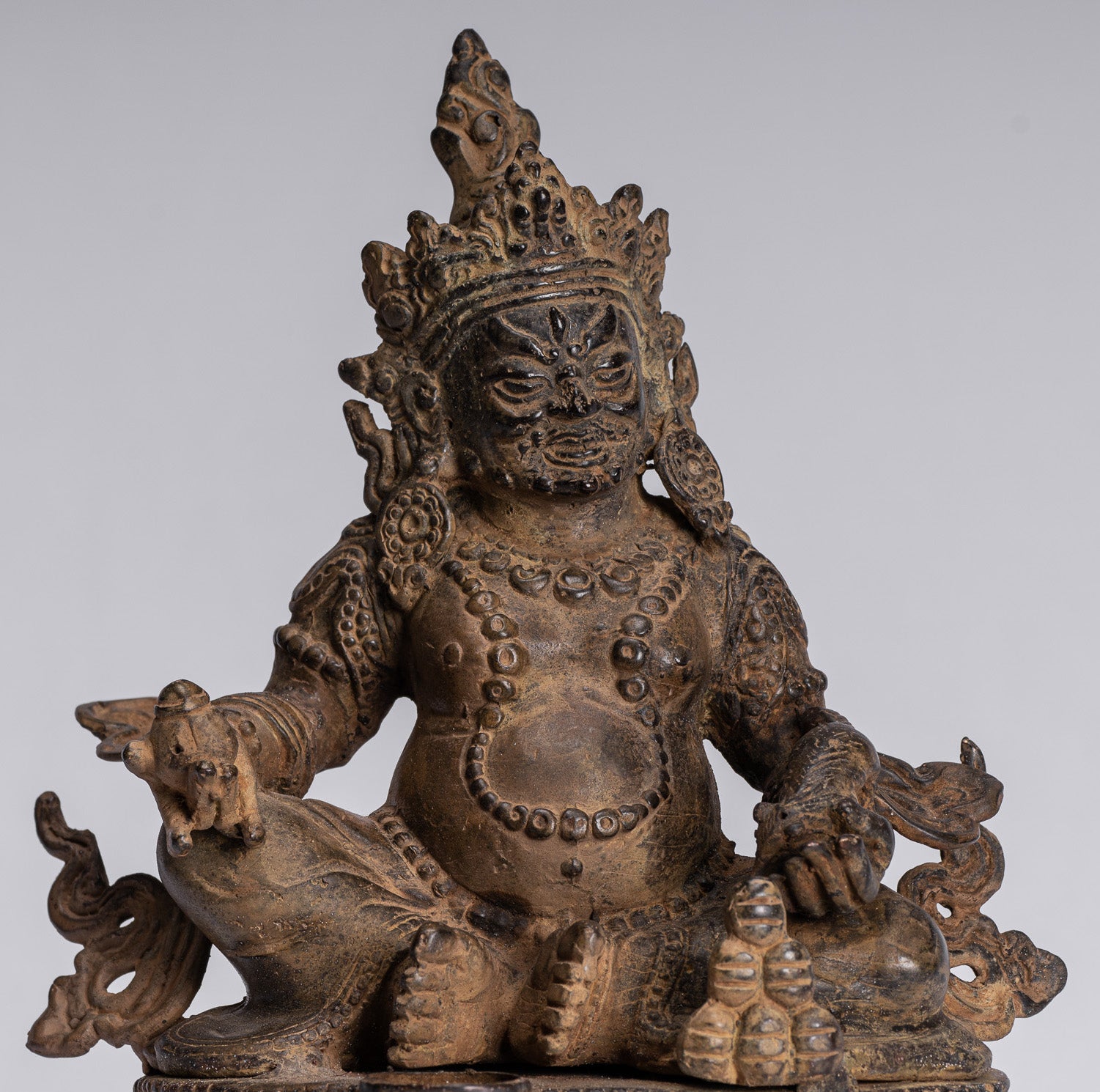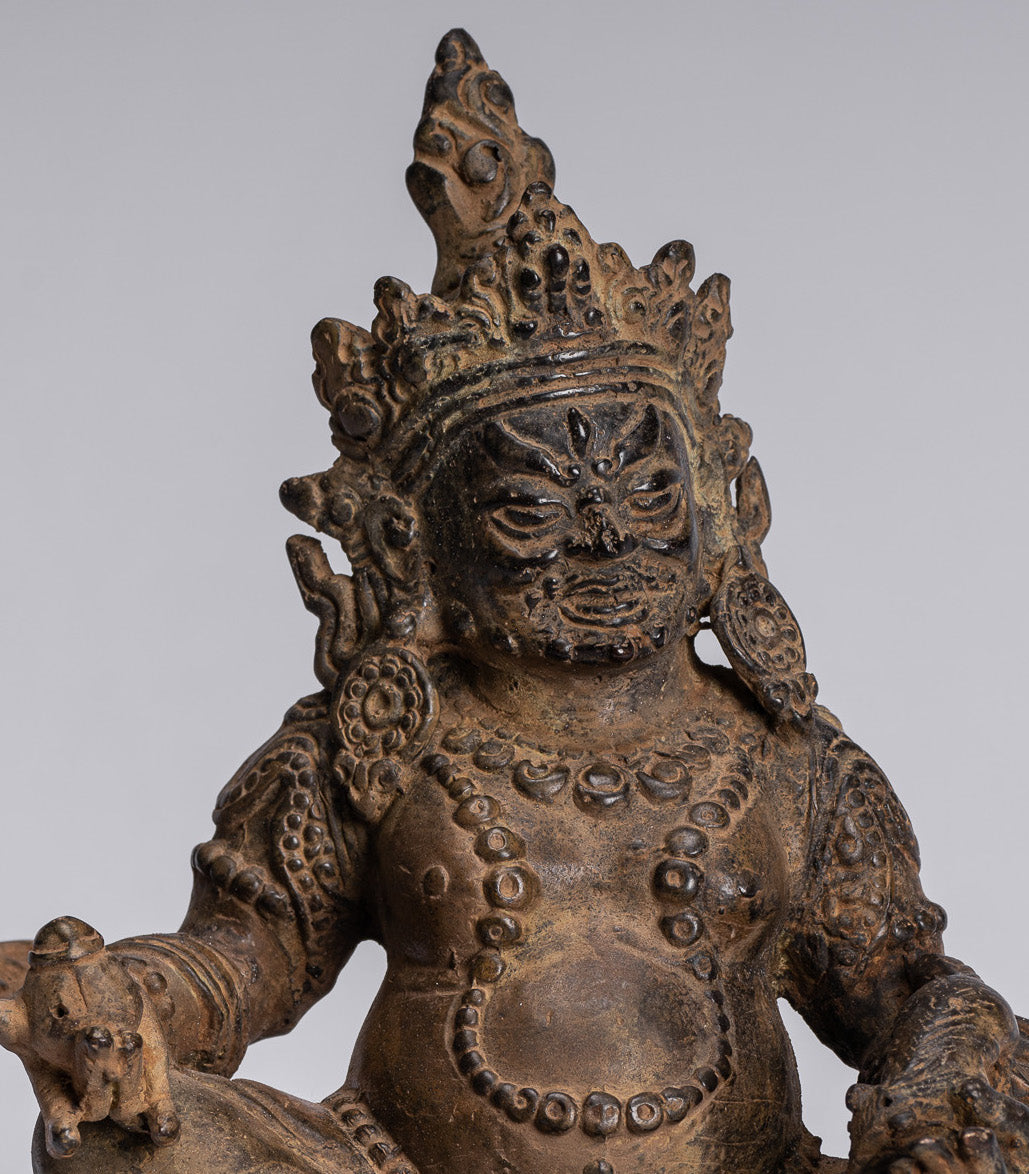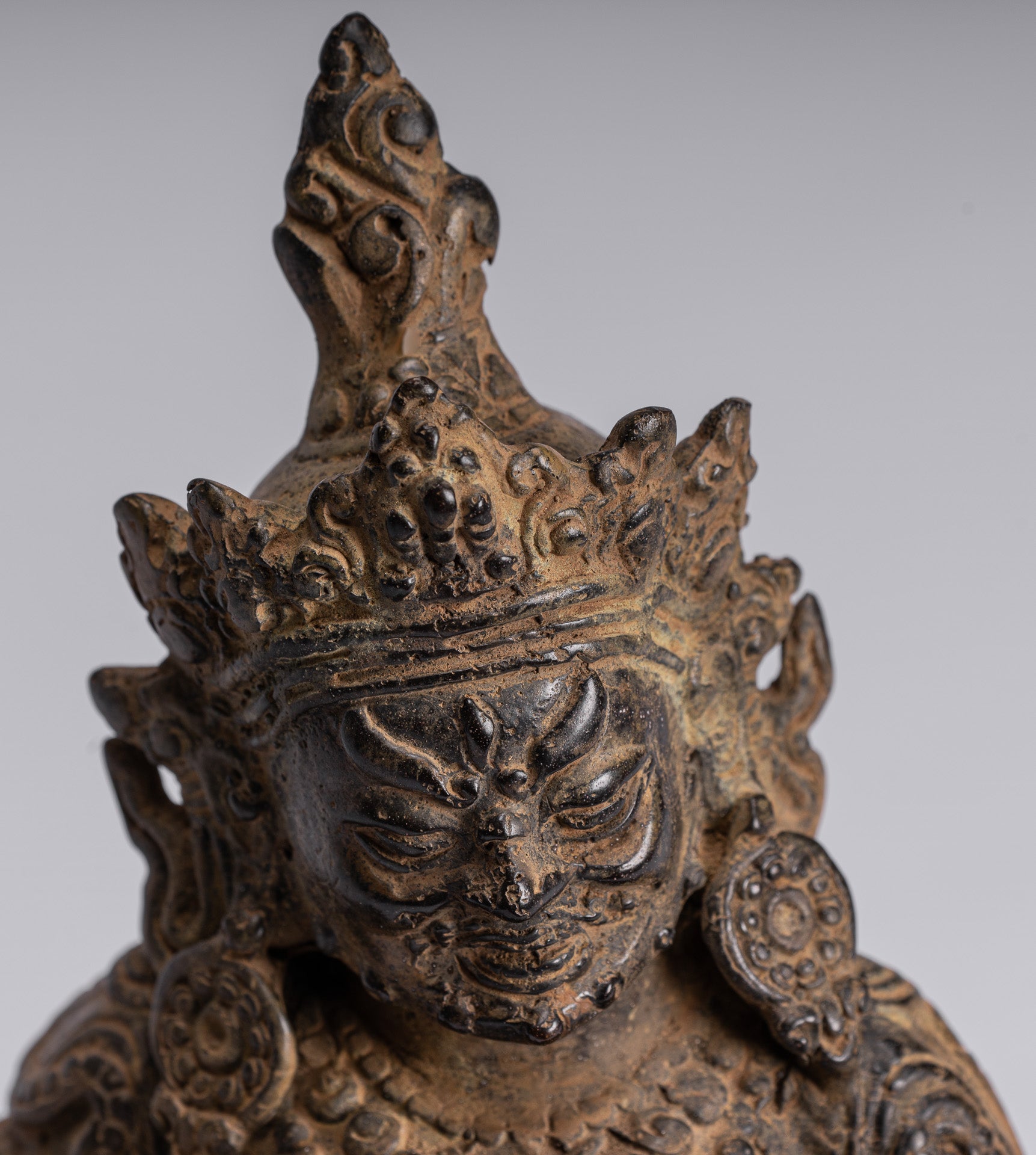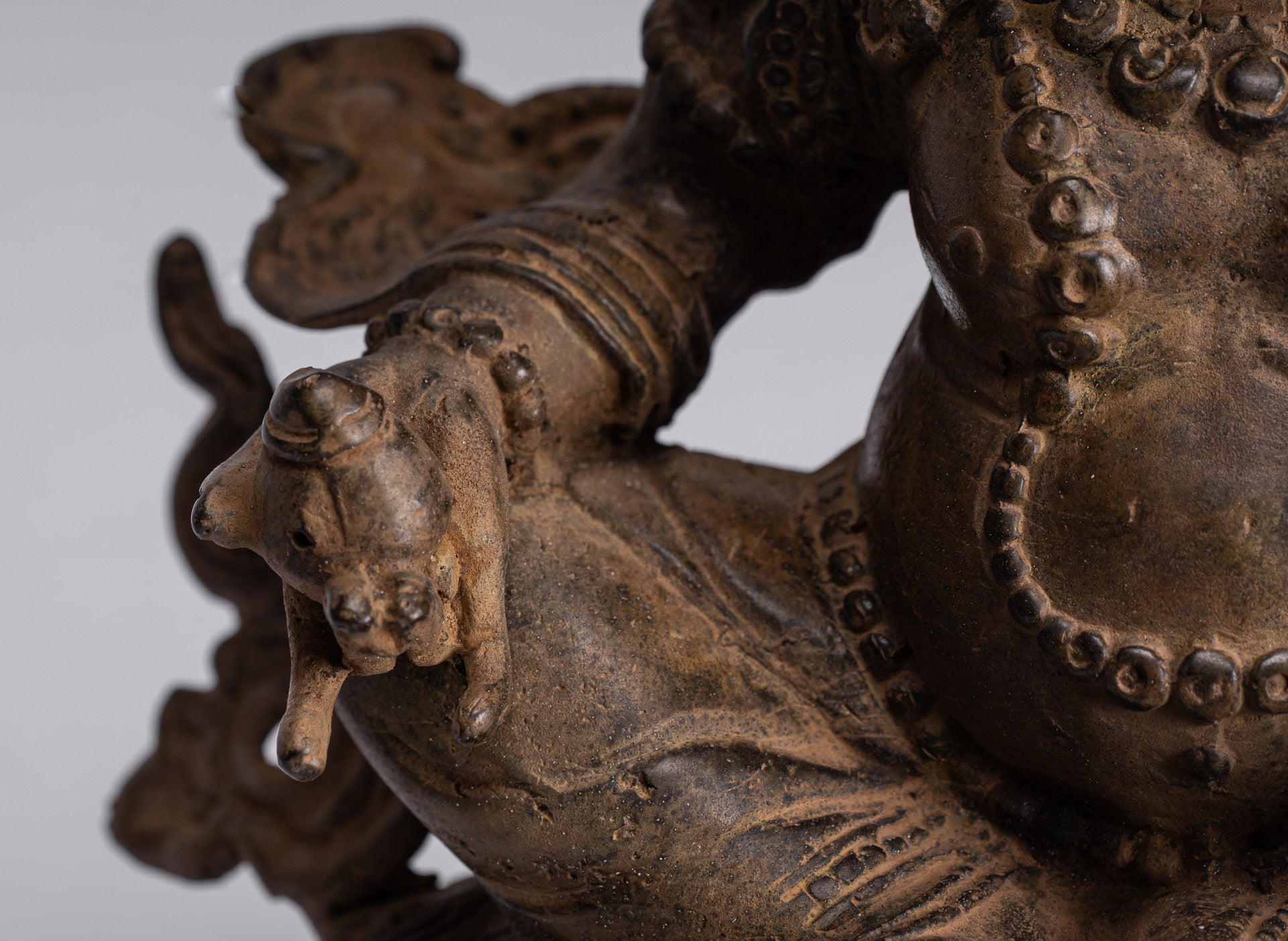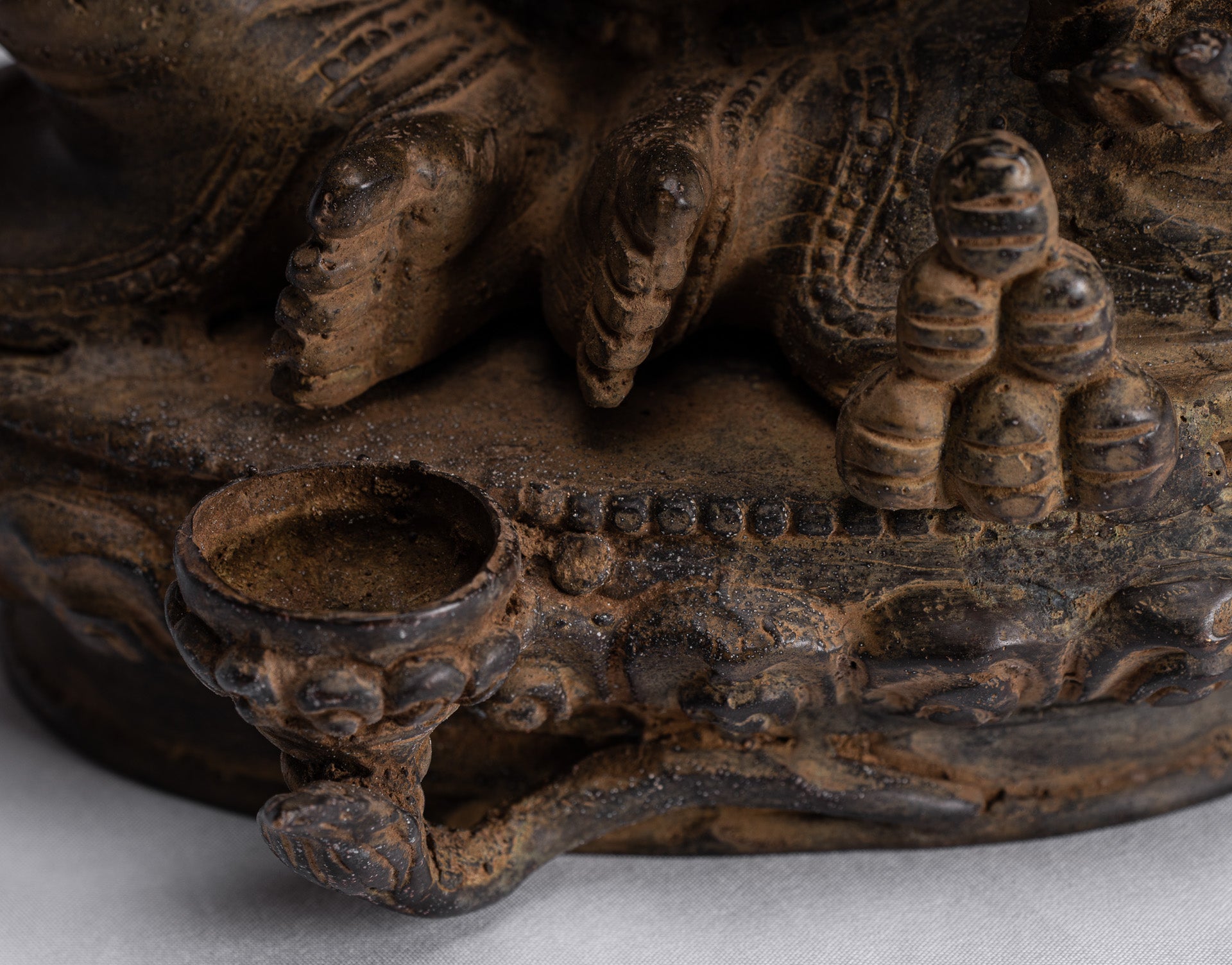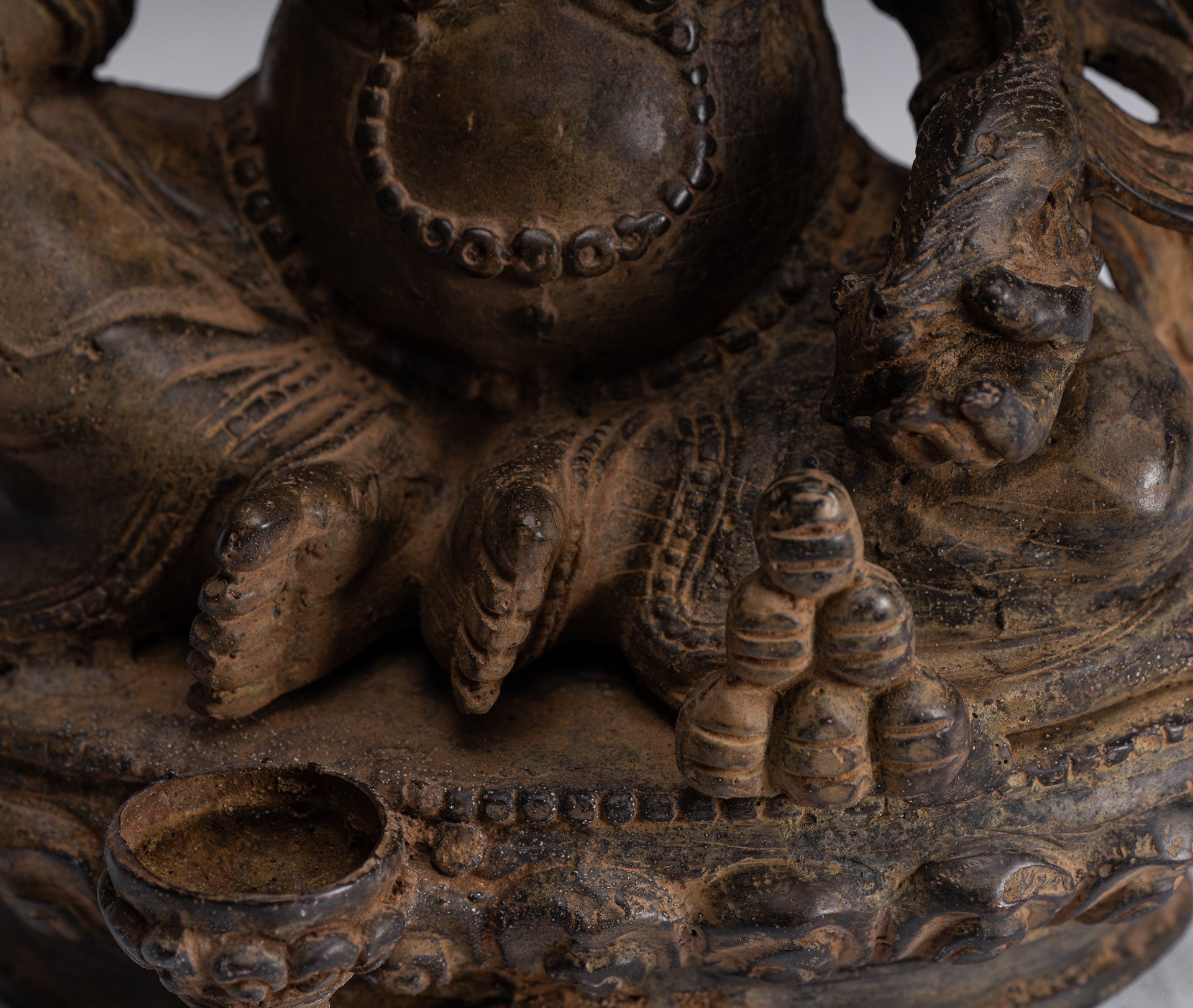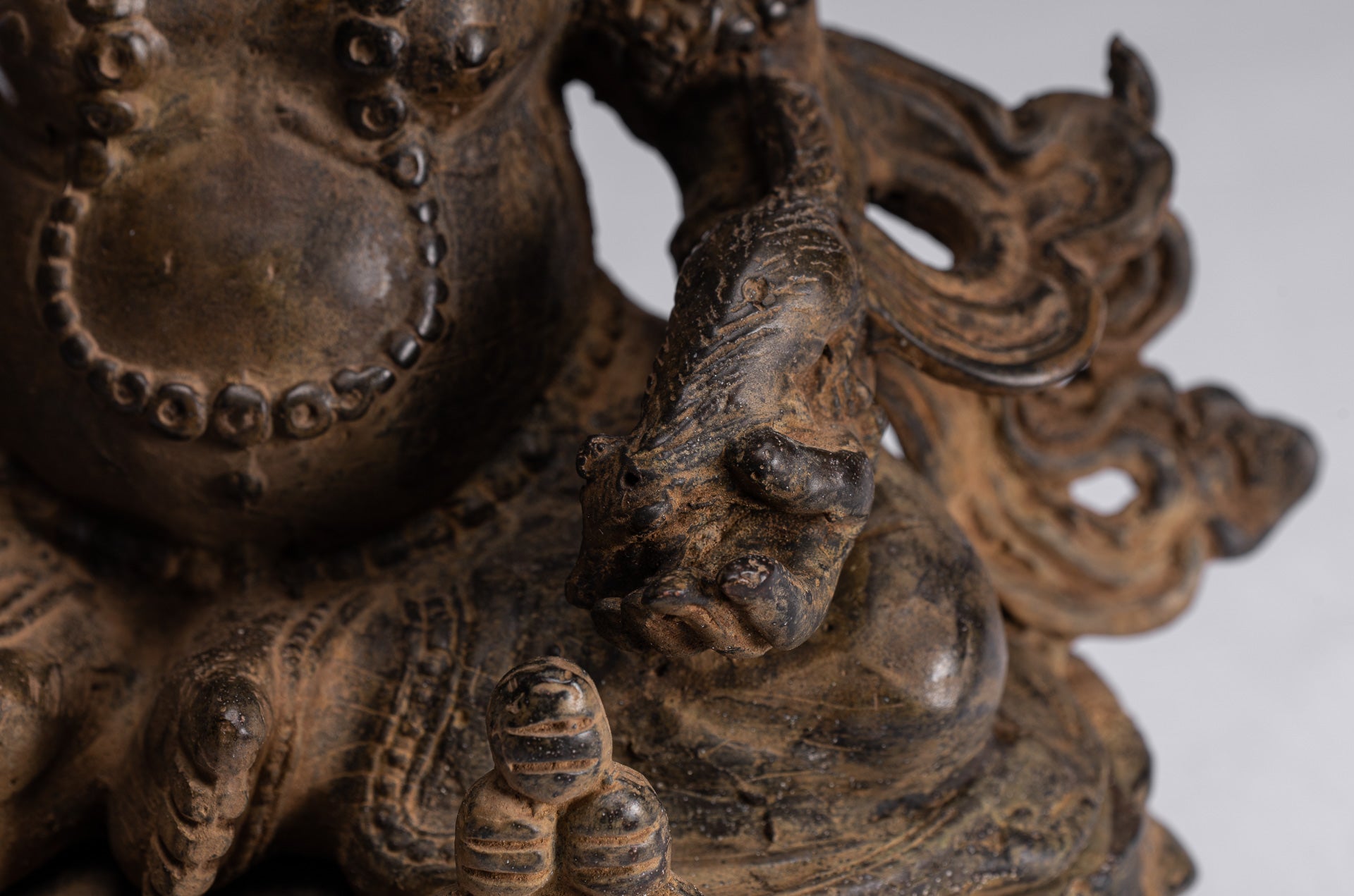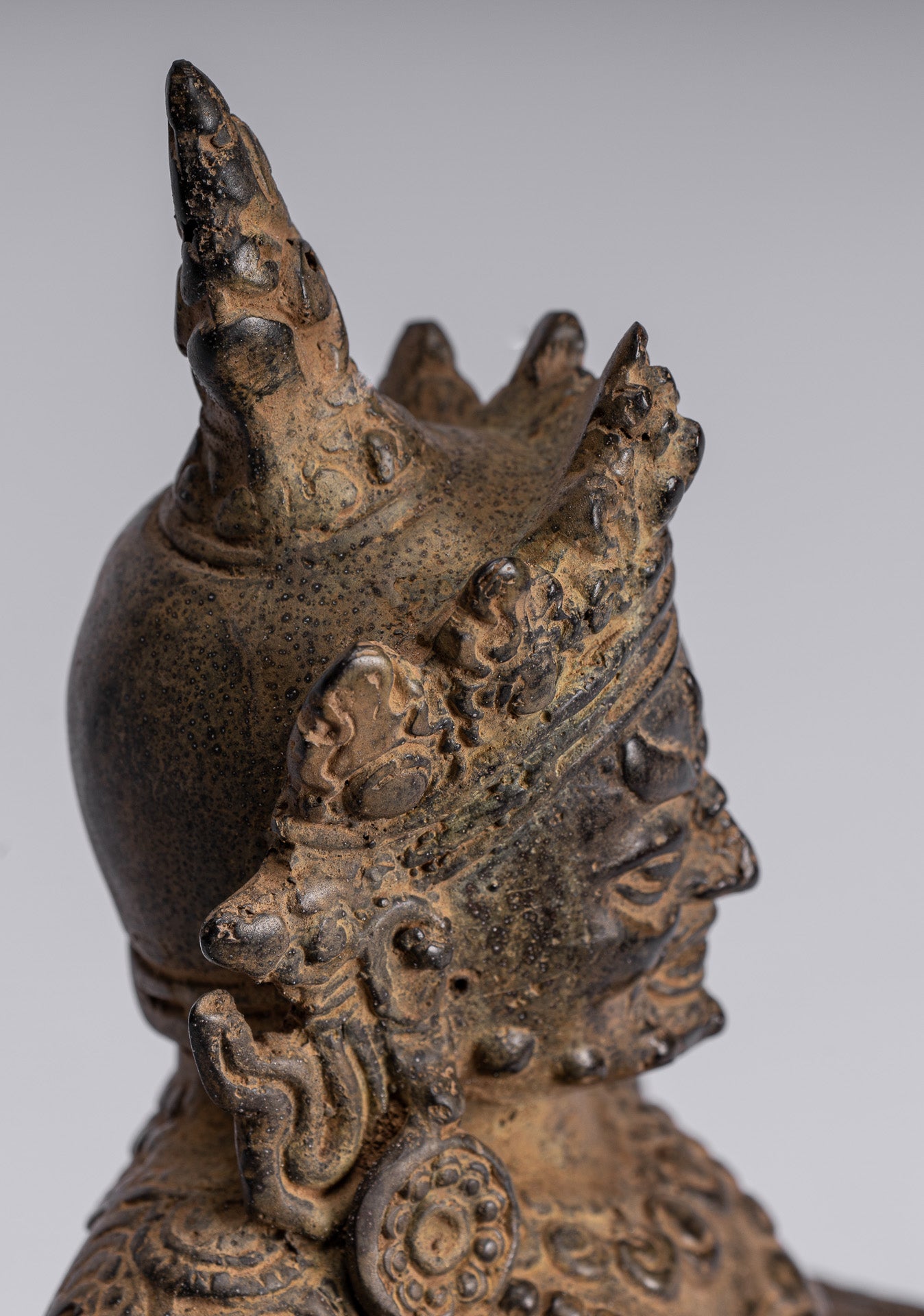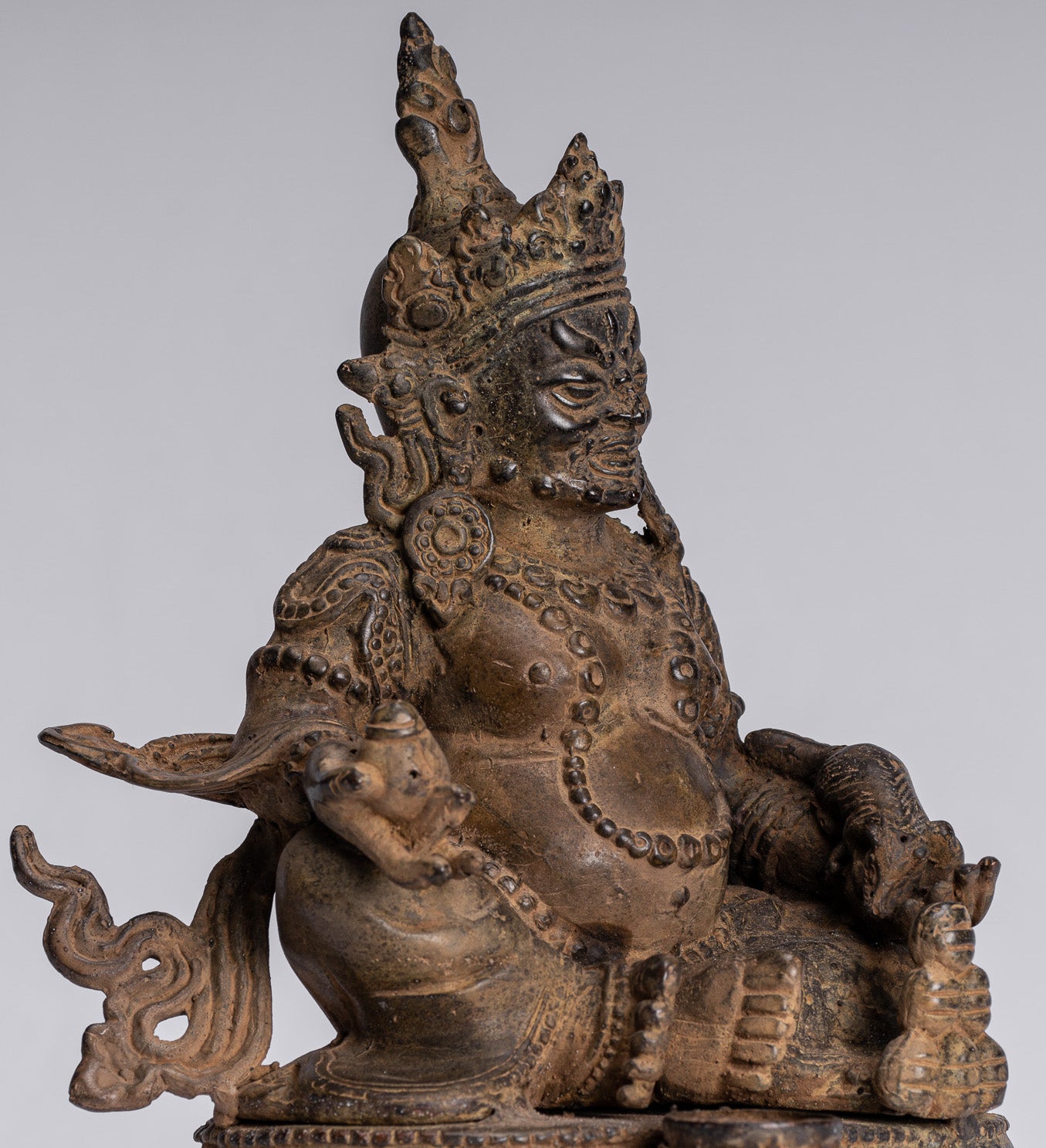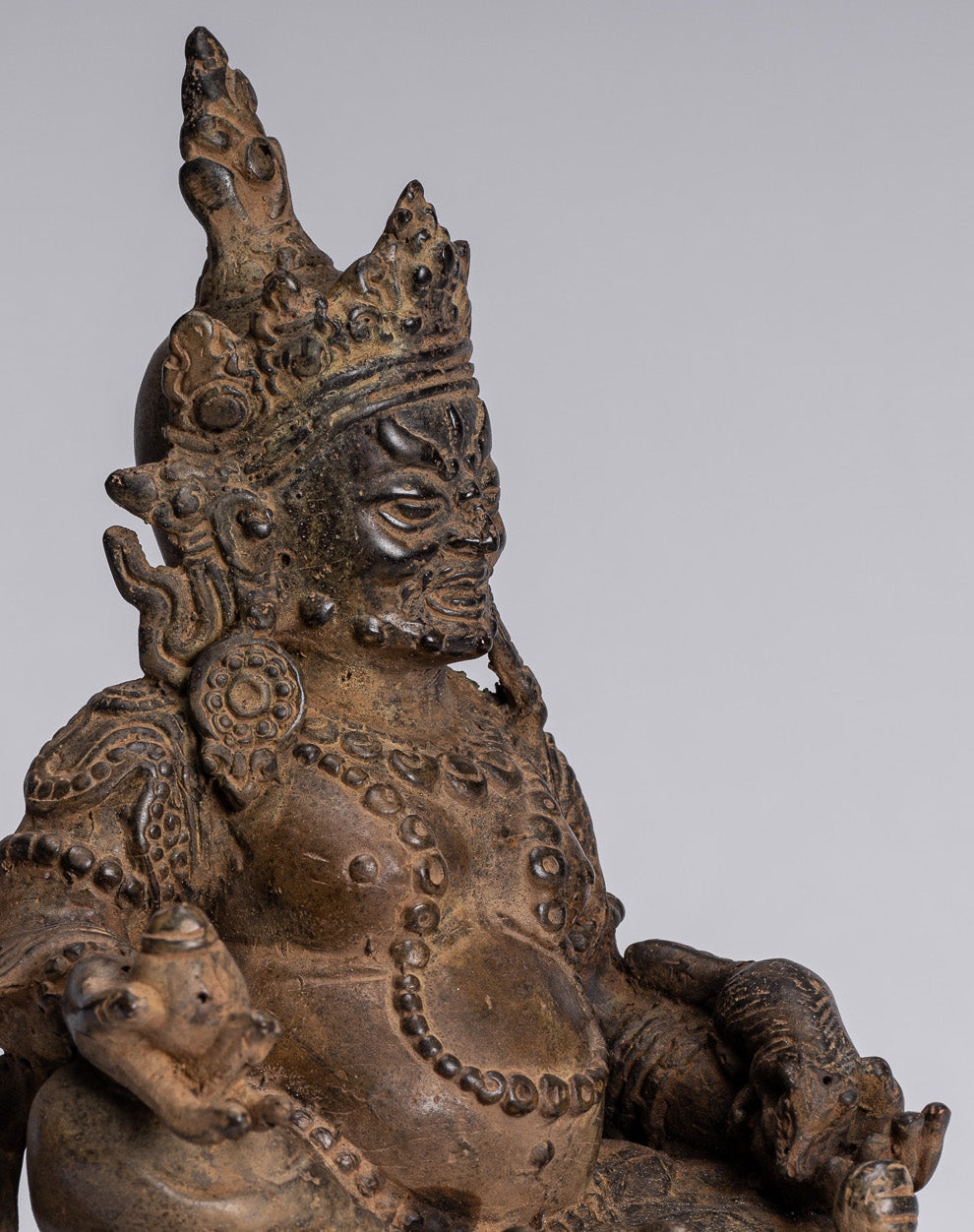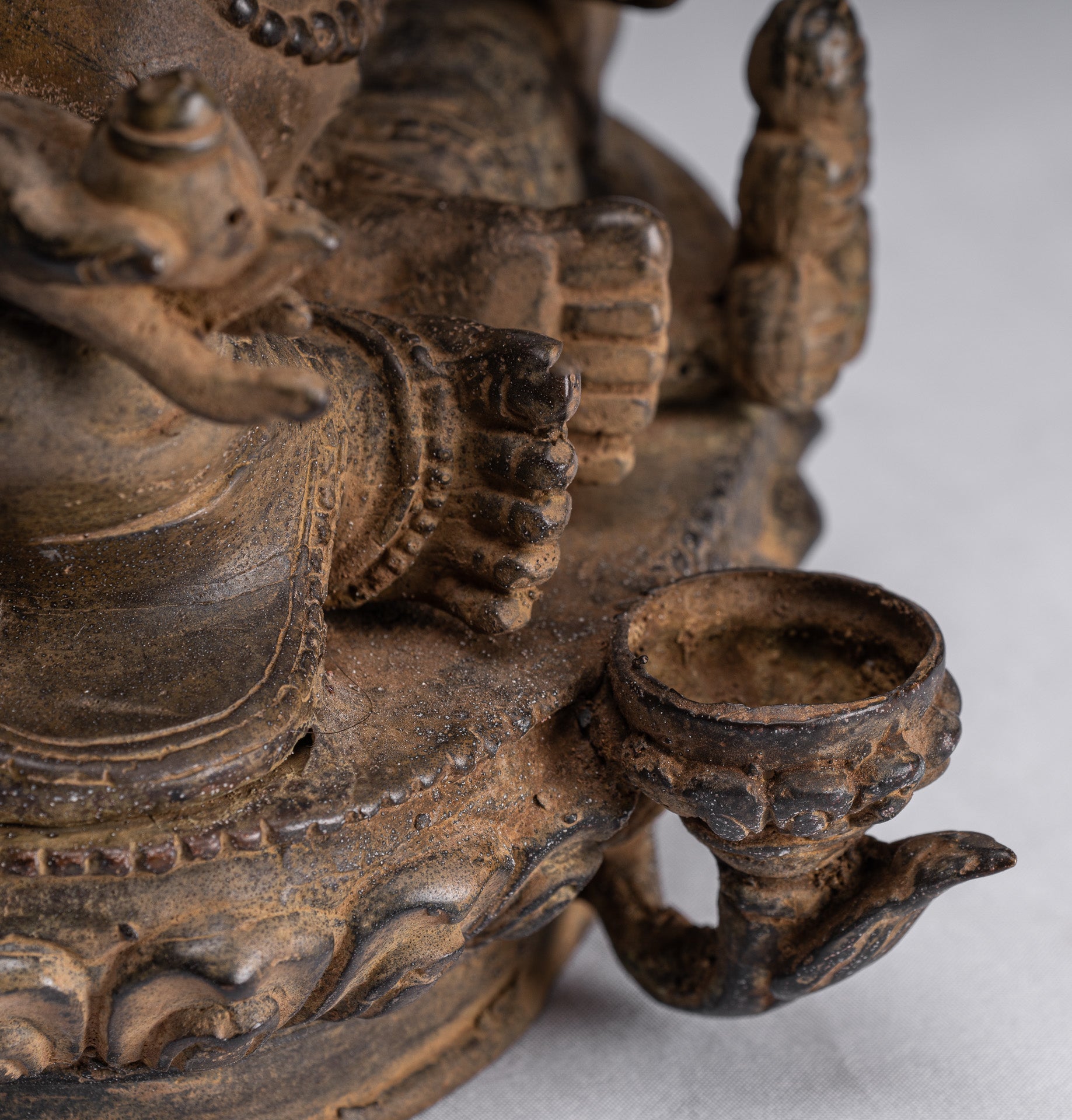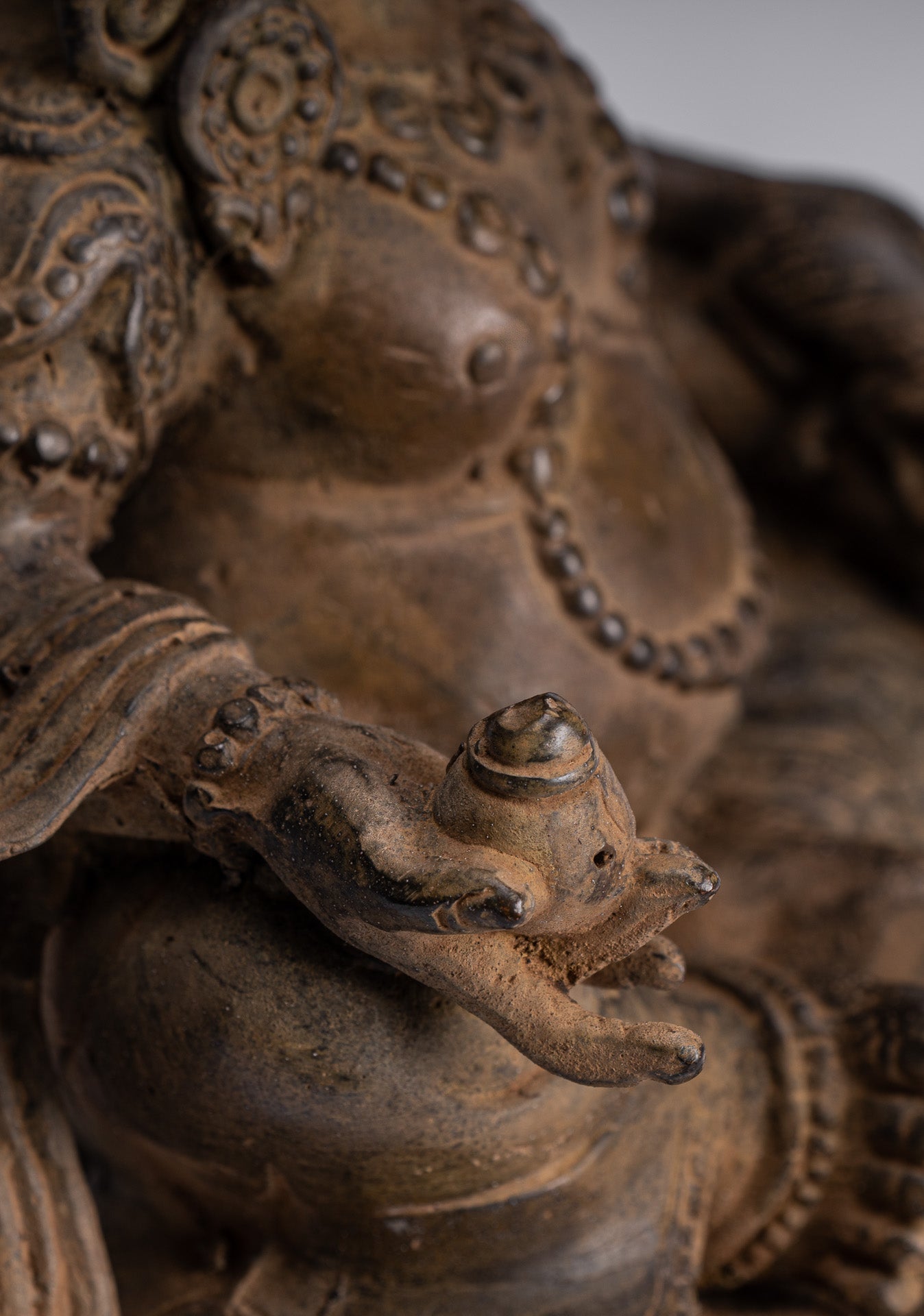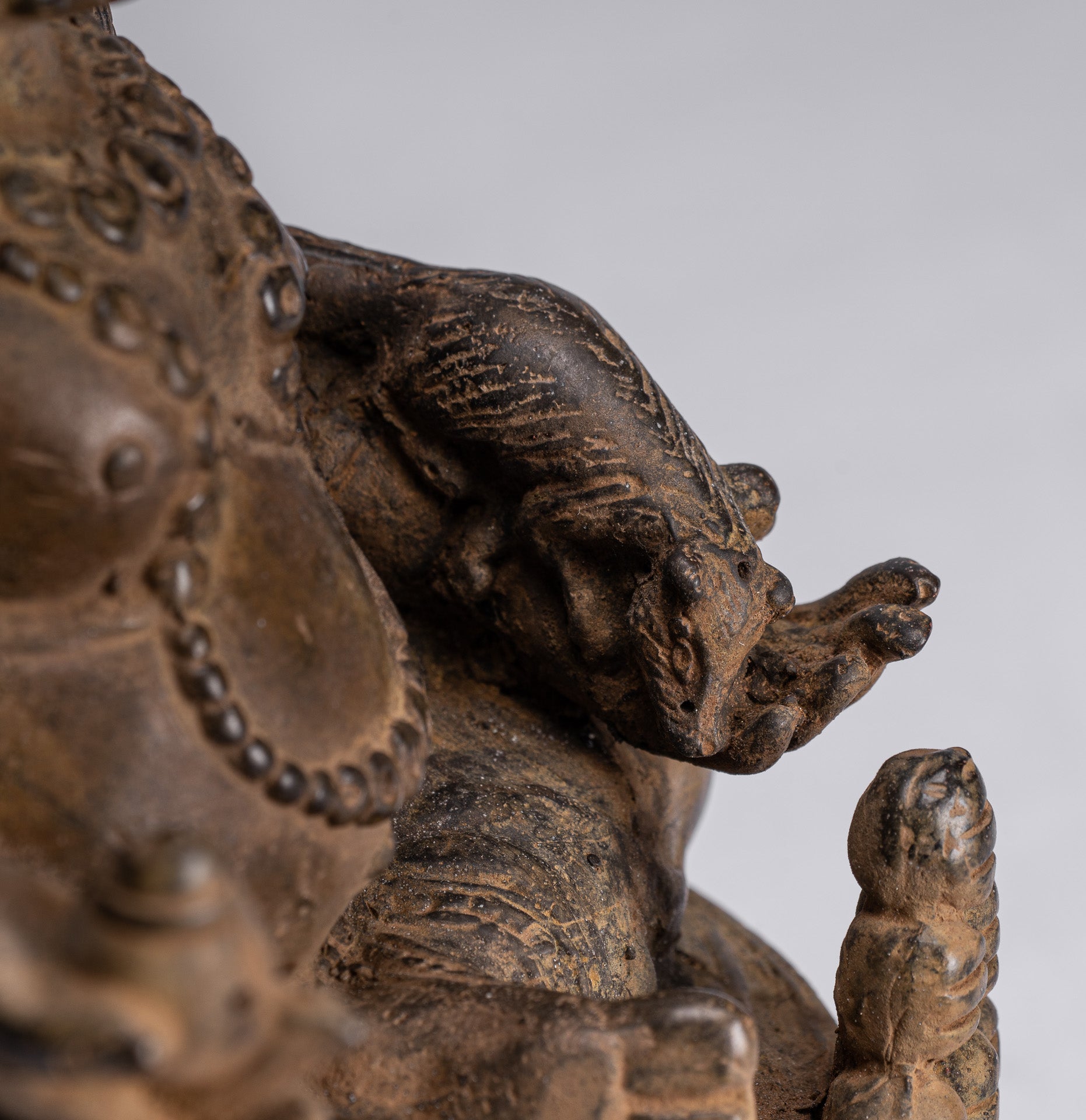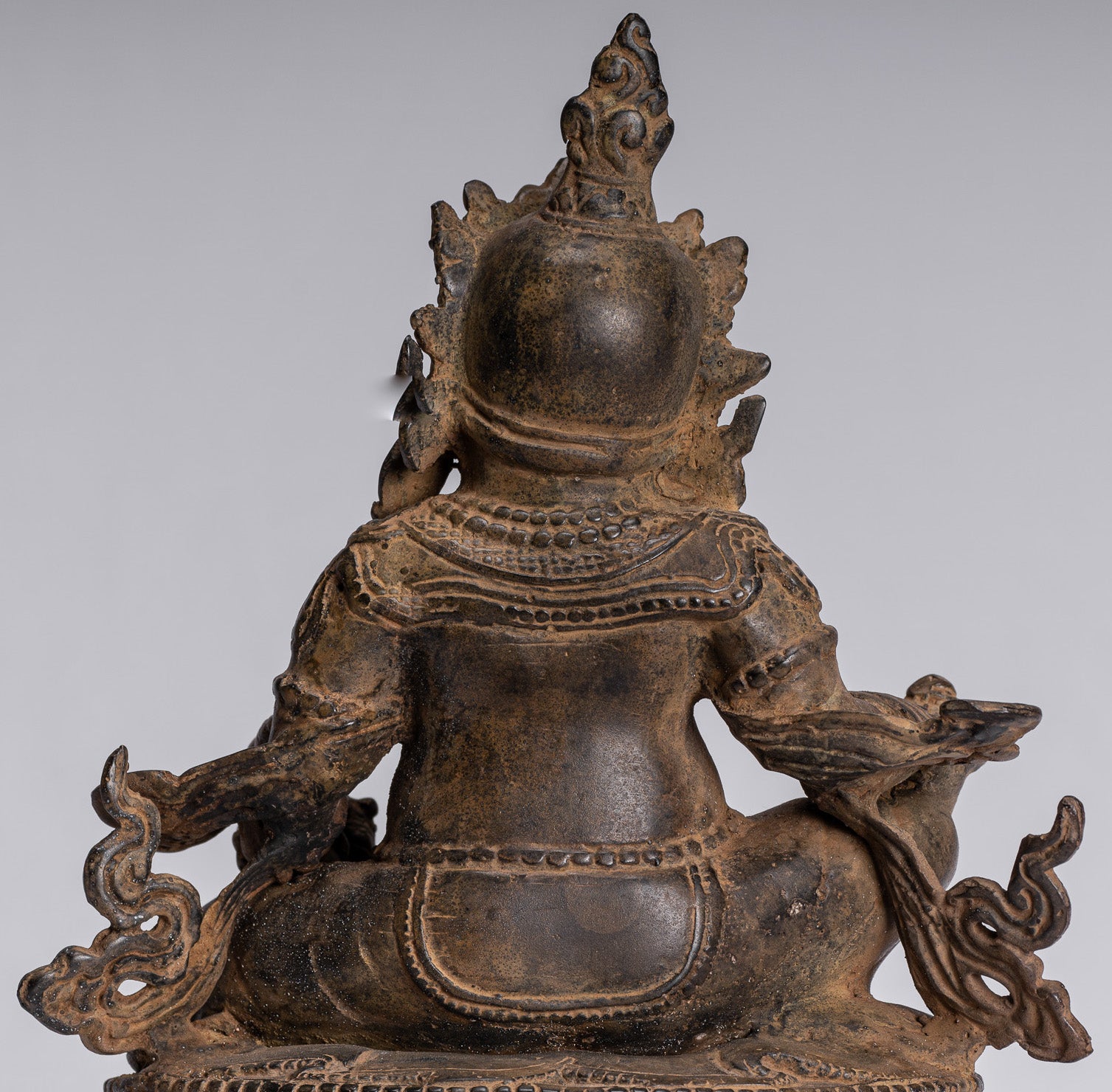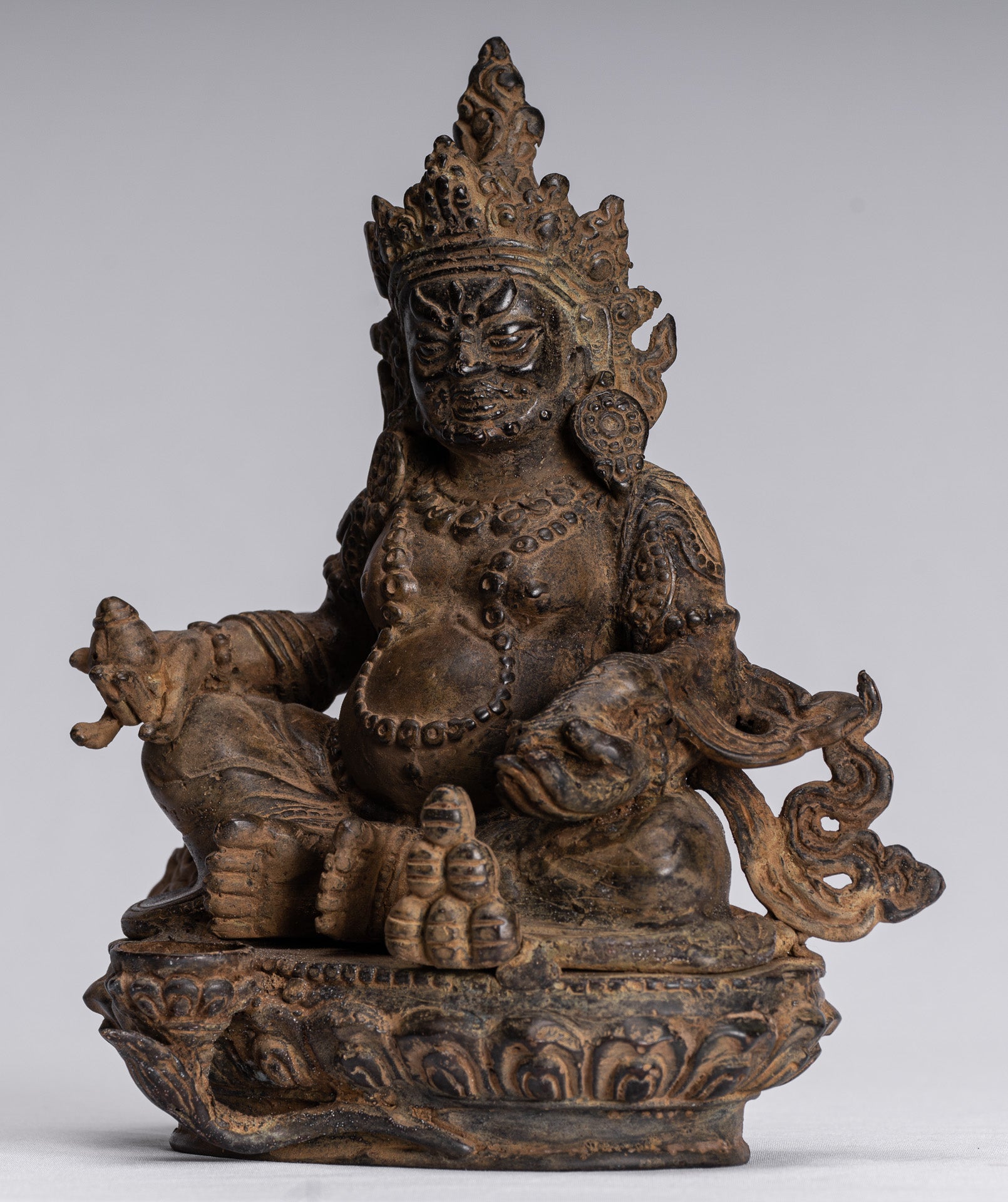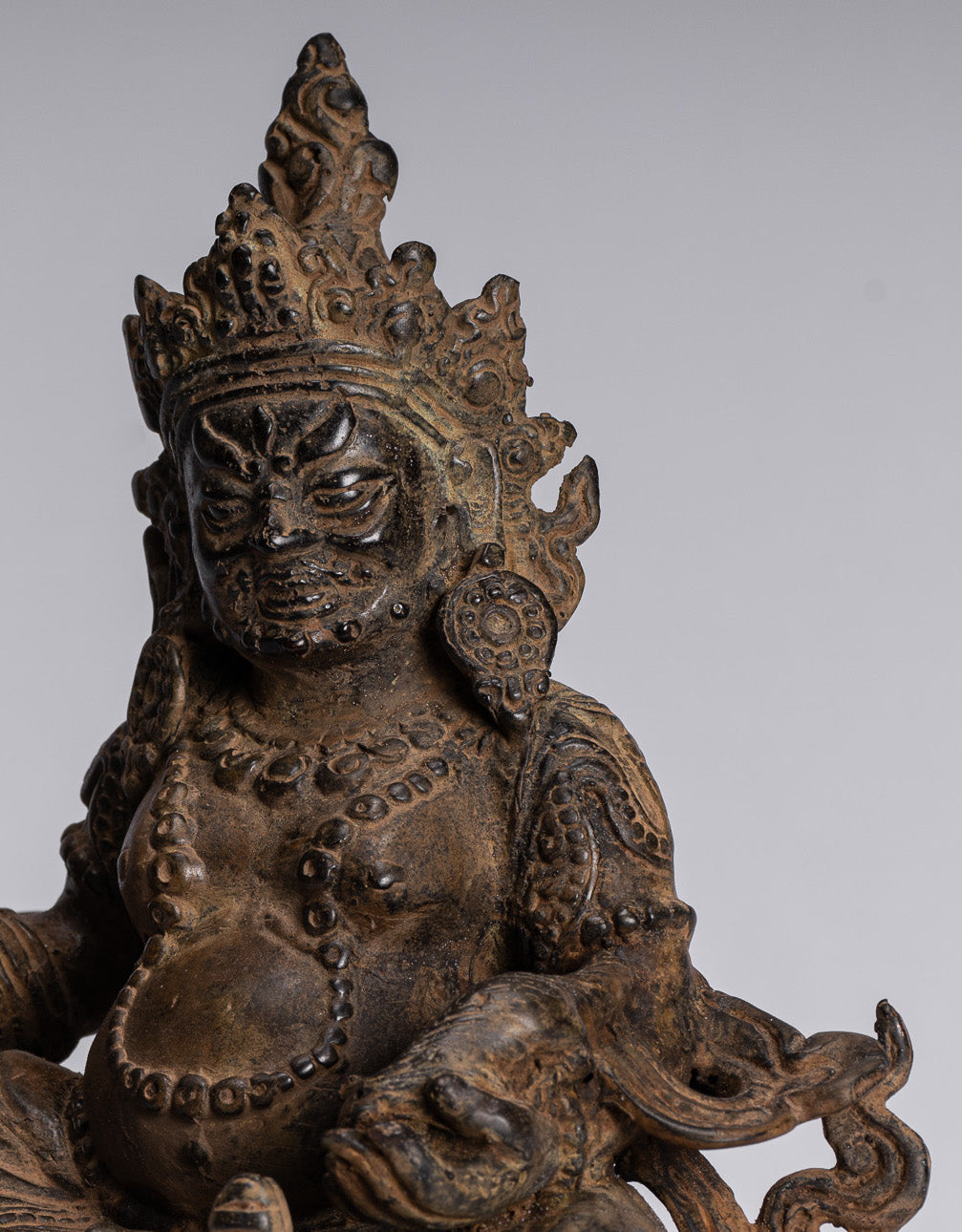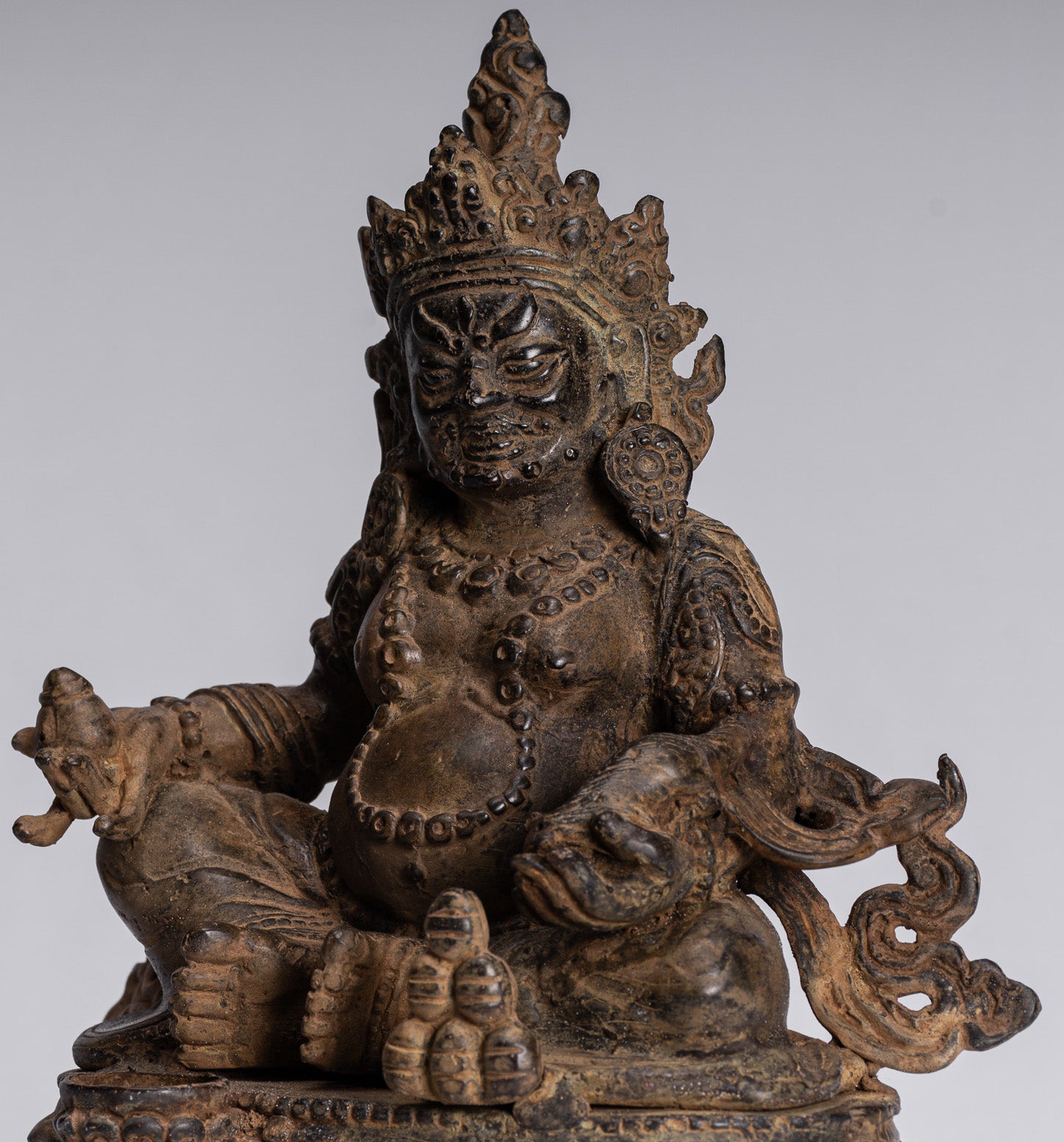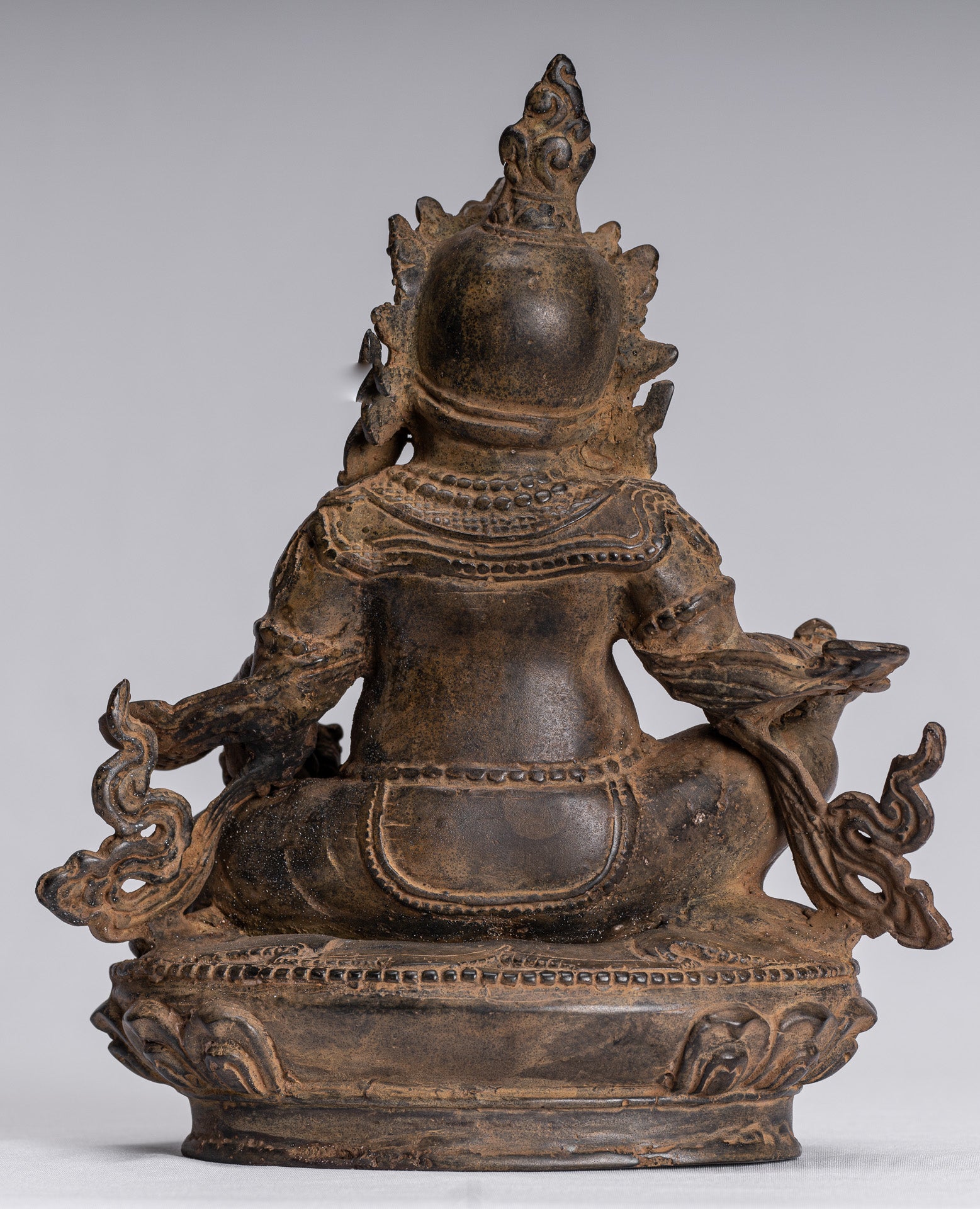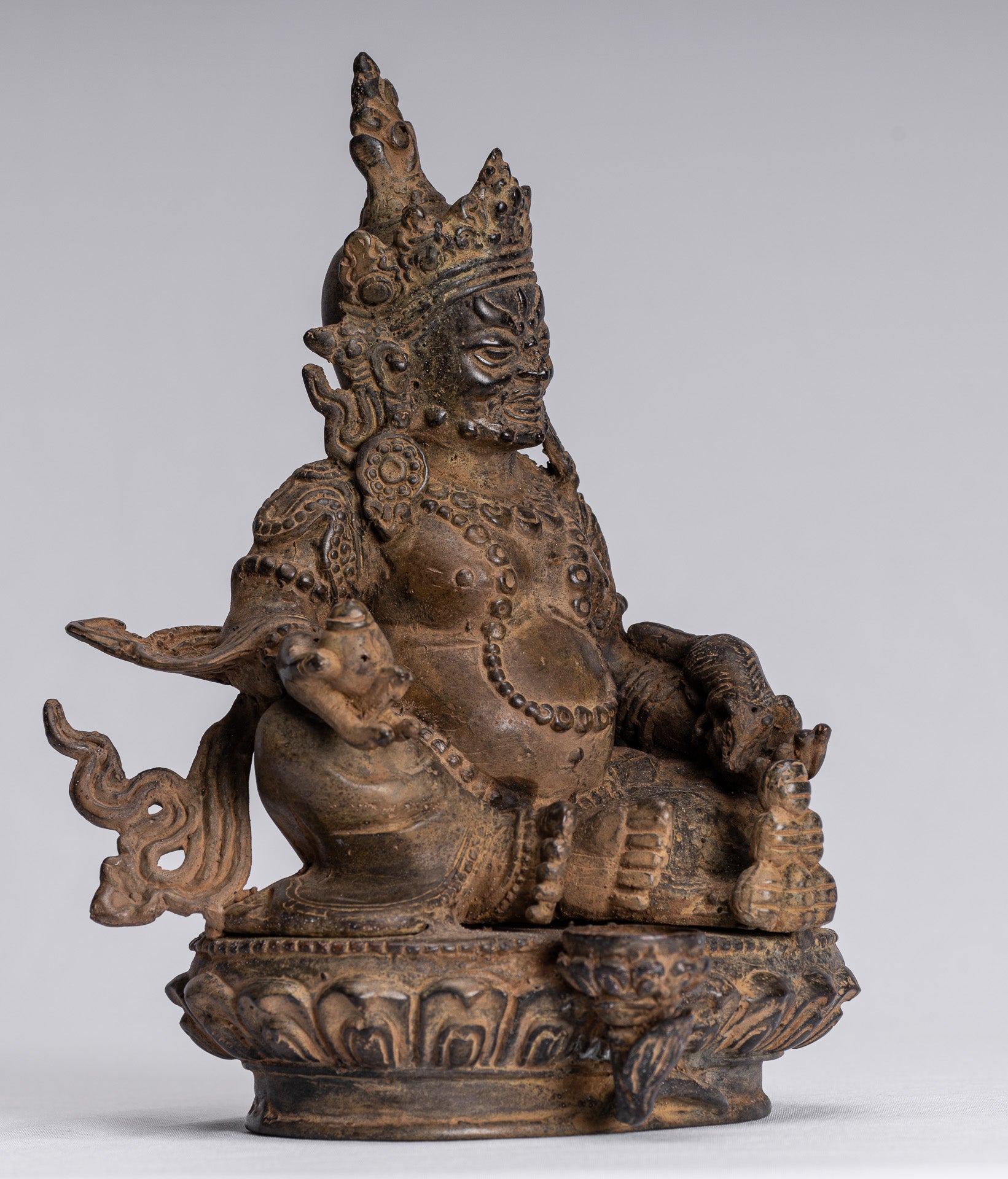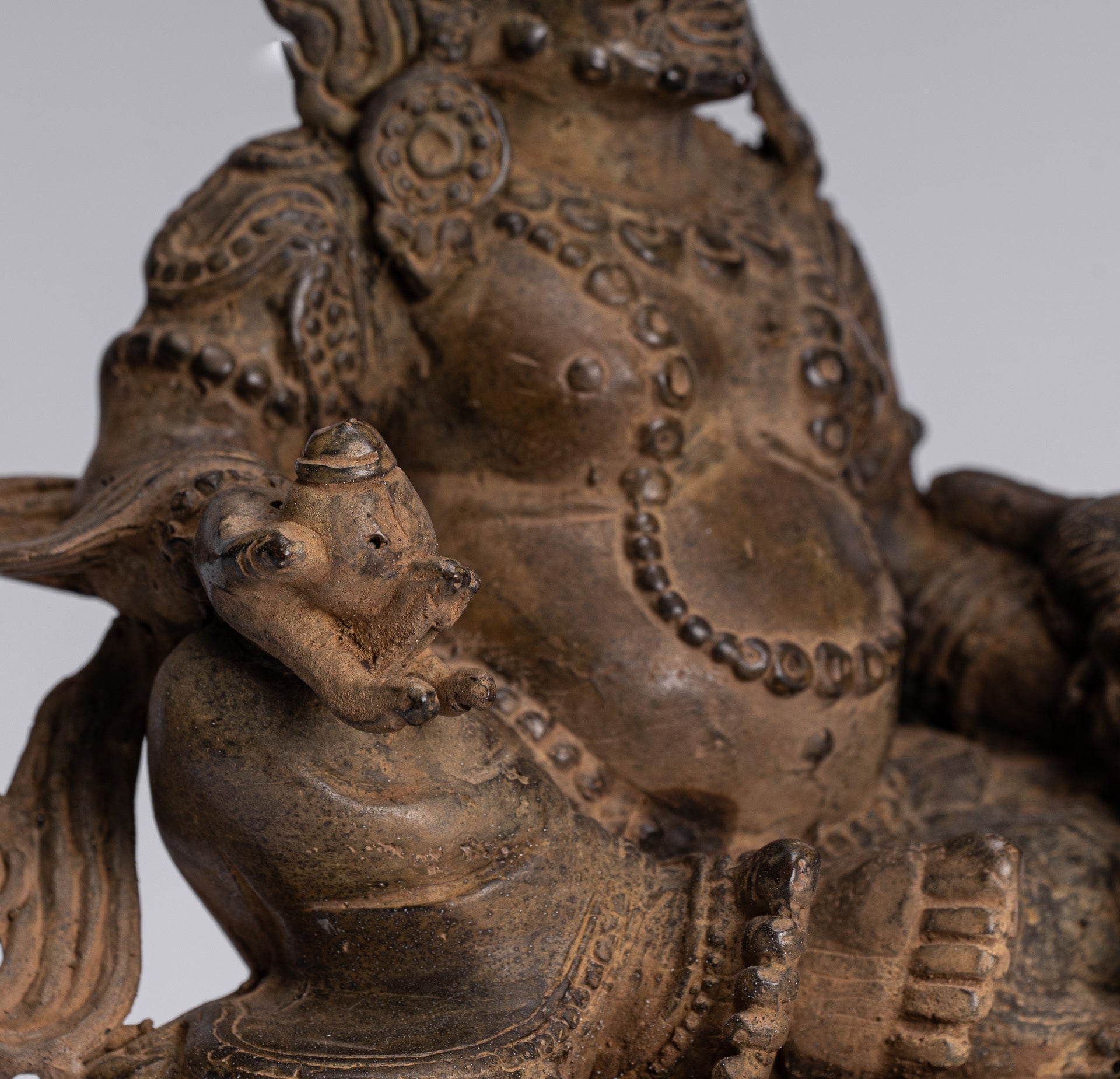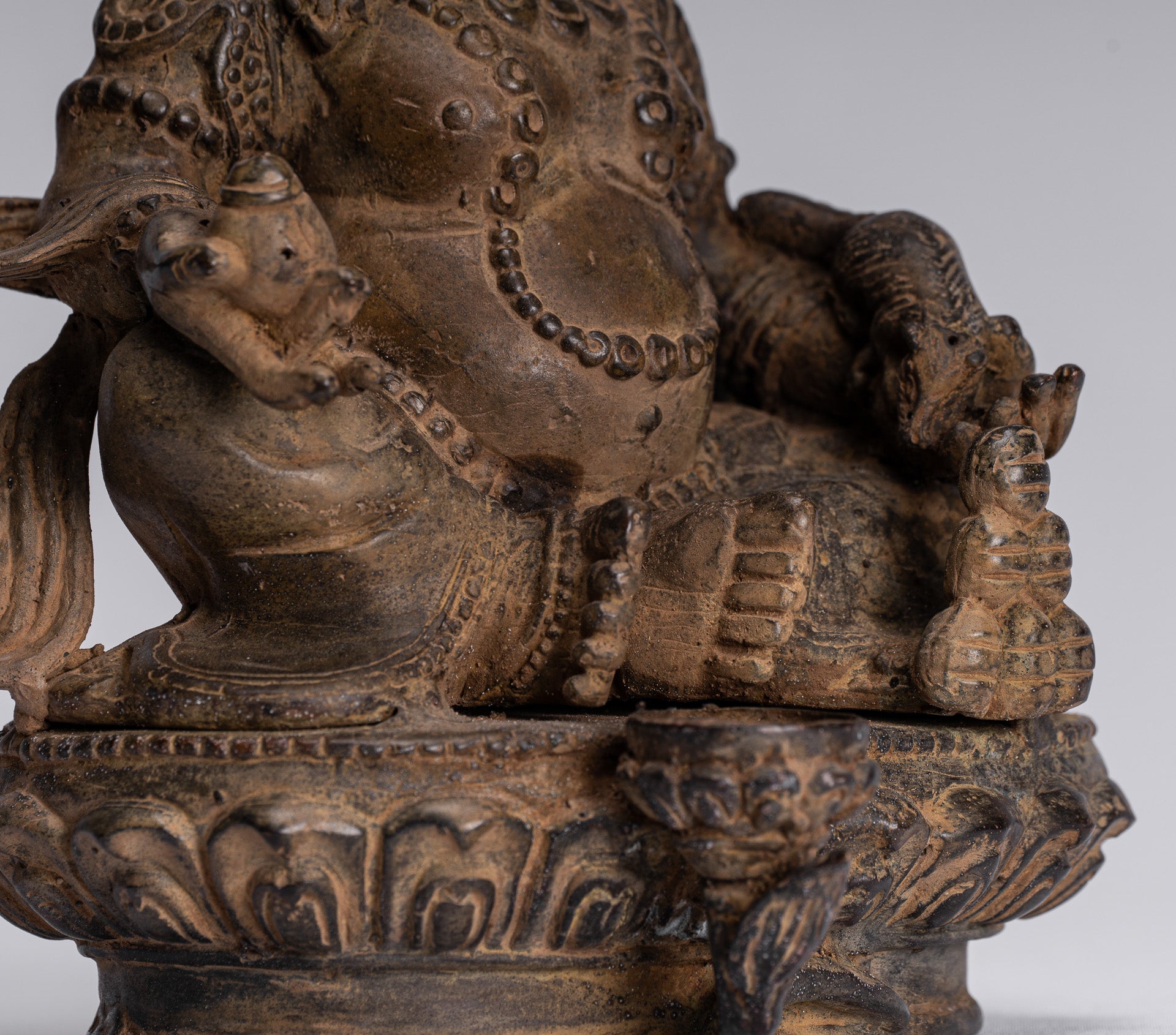-
Antique Java Majapahit Style Seated Yellow Jambhala Statue God of Wealth - 21cm/8"
Measures (Height) 21cm/8"
An antique Majapahit style Jambhala (also known as Dzambhala, Dzambala, Zambala or Jambala) from Java, Indonesia. Jambhala is the God of Wealth and appropriately a member of the Jewel Family. He is sometimes equated with the Hindu deity Kubera. Jambhala is also believed to be an emanation of Avalokitesvara, the Bodhisattva of Compassion.
Jambhala is a Bodhisattva of material and spiritual wealth as well as many other things, especially of granting financial stability. Here we see the Yellow Jambhala. He is considered the most popular and powerful of the Wealth Gods. An emanation of Buddha Ratnasambhava. He can move poverty within the six realms, increasing virtues, life span and wisdom. He is also said to be an emanation of Vaisravana, one of the "Four Great World-protecting Heavenly Kings". He is the guardian of light in Buddhism, a great charitable deity who grants fortune and protection. Lord Vaisravana lives in the northern region under the Four Heavens, at the northern crystal palace on the fourth level of Mount Sumeru.
His servants are either yaksas or bhaisajya-yaksas. According to the commentary on Lotus Sutra, this heavenly king is extremely knowledgeable as his perpetual protection of the Buddhas has enabled him to receive many teachings. Here Yellow Jambhala sits in the vajra position with his right leg is panhandle, resting on a lotus flower and his left leg is kinked. He has one face and two arms.
His left hand holds gems wrapped in a lotus leaf. HIs right hand holds a Kalasha. The Kalasha is considered a symbol of abundance and "source of life" in the Vedas. It is referred to as "overflowing full vase" in the Vedas. The Kalasha is believed to contain amrita, the elixir of life, and thus is viewed as a symbol of abundance, wisdom, and immortality.
A stack of gems can also be seen at his feet. A further symbol of both his material and spiritual wealth.
He is seated on a round lotus blossom pedestal. This represents purity, compassion and the giving of great joy to all.
Scholarly Reference:
New York Metropolitan Museum Collection - Accession Number: 1987.142.175
Christie's Auction House - Sale 16002 (September 2017) - The Collection of Paul F. Walter
This traditional in appearance piece is sure to bring serenity to your home, office or sacred place.
SATISFACTION GUARANTEE - We have been offering SE Asian Art for many years and are proud of the reputation we have developed for fair and honest listings. However, if for any reason, whatsoever, you are unhappy with your purchase please just let us know and we will provide a full refund. We want you to be 100% happy with your purchase.
-
The majority of orders will be shipped with DHL. This is a secure, express and fully tracked service.
Items less than 2Kg we typically ship using Royal Mail.
Once we receive your order we try to ship all orders the same or next working day.
Large and/or fragile pieces requiring palletising, specialist crating and/or extra packaging may take a little longer. Palletised shipments will be delivered curbside.
All orders over 35 GBP will be shipped free of charge.

-
We genuinely hope that all purchases delight.
However, if they do not, regardless of reason, we will refund all orders upon receipt of the unwanted item. Just notify us within 14 days of receiving your order that you wish to make a return and send the piece back to us with 30 days of delivery.
Let Us Help You Find The Piece You Desire
Let Us Help You Find The Piece You Desire
We received the reclining Buddha and we love it! Thanks again!
Terence, Zurich, Switzerland
It is an amazing "museum quality" antique bronze!!! For a 19th century bronze antique, I believe the Newark, NJ Museum may express interest if I show them. However, they will never get it and I will have it in my collection for posterity. We will be doing much more business in the foreseeable future, count on it!!!
Joseph, Newark, NJ, USA
The Buddha statues have arrived, safe and sound thank to your professional packaging and everything else. I am so impressed and certainly will be back again to purchase more from you. My warmest thanks and appreciation.
Truong, Toronto, Canada


